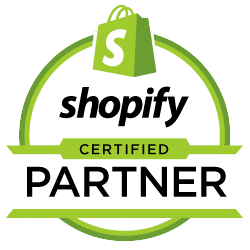Small business owners often view branding as something only big companies need to worry about. You might think it’s all about fancy logos and expensive ad campaigns that only Fortune 500 companies can afford. But here’s the truth: strong branding is the secret weapon that separates thriving small businesses from those that struggle to get noticed.
In 2026, your brand isn’t just your logo or tagline. It’s the complete experience your customers have with your business. It’s what they think, feel, and remember about you. And in a world where consumers have endless choices at their fingertips, your brand could be the deciding factor between making a sale and losing a customer to your competitor.
This post will show you why branding matters more than ever for small businesses, backed by real examples and practical steps you can take today to strengthen your brand and fuel your growth.
What Branding Really Means for Small Business
Branding goes far beyond visual elements. Your brand is the personality of your business. It’s how you communicate, the values you stand for, and the promises you make to your customers.
Think about Warby Parker, the eyewear company that started as a small online business. They didn’t just sell glasses. They built a brand around making eyewear affordable, stylish, and socially conscious. Their “buy a pair, give a pair” program became part of their brand identity. This clear brand positioning helped them grow from a startup to a billion-dollar company.
For small businesses, branding creates three critical advantages:
Recognition: A strong brand makes you memorable. When customers need what you offer, they think of you first.
Trust: Consistent branding builds credibility. Customers feel more confident buying from businesses that appear professional and reliable.
Premium pricing: Strong brands can charge more because customers perceive higher value.
The 2026 Branding Landscape
The business world has changed dramatically. Digital technology, social media, and shifting consumer expectations have created new challenges and opportunities for small businesses.
Consumer Expectations Have Evolved
Today’s customers expect more from the brands they support. According to recent studies, 73% of consumers are willing to pay more for products from companies committed to positive social and environmental impact. This means your brand needs to stand for something beyond just making money.
Patagonia exemplifies this perfectly. Their brand is built around environmental activism and quality outdoor gear. They regularly take political stands on environmental issues, even at the risk of alienating some customers. This authentic brand positioning has created an incredibly loyal customer base that pays premium prices for their products.
The Digital-First Reality
Most customer interactions now happen online. Your website, social media profiles, and online reviews form the first impression many customers will have of your business. This digital presence is your brand in action.
Consider how Dollar Shave Club disrupted the razor industry. Their brand was irreverent, funny, and accessible. Their viral launch video perfectly captured their brand personality and helped them gain 26,000 customers in just 48 hours. They built their entire brand through digital channels before being acquired by Unilever for $1 billion.
Information Overload and Shortened Attention Spans
Customers are bombarded with thousands of marketing messages daily. Your brand needs to cut through this noise quickly and effectively. You have seconds to make an impression and communicate your value.
This is where consistency becomes crucial. When your messaging, visuals, and customer experience align across all touchpoints, you create a clear, memorable impression that sticks with customers.
How Strong Branding Drives Business Growth
Increased Customer Loyalty
Strong brands create emotional connections with customers. When people feel connected to your brand, they become repeat buyers and advocates who recommend you to others.
Starbucks built their brand around the “third place” concept – a comfortable space between home and work. This brand positioning created such strong loyalty that customers willingly pay premium prices for coffee they could get cheaper elsewhere. Their customers don’t just buy coffee; they buy into the Starbucks experience.
Higher Profit Margins
Branded businesses can charge premium prices because customers perceive higher value. Generic products compete primarily on price, while branded products compete on value, quality, and experience.
Look at Apple’s success. Their products often have similar technical specifications to competitors, but Apple’s brand commands significantly higher prices. Customers pay more because they trust the Apple brand and want to be associated with it.
Better Employee Attraction and Retention
A strong brand doesn’t just attract customers – it attracts top talent. Employees want to work for companies they’re proud to represent. When your brand clearly communicates your values and mission, you attract people who share those values.
Companies like Zappos built their brand around exceptional customer service and company culture. This brand reputation helps them attract employees who are passionate about customer service, creating a cycle that reinforces their brand promise.
Easier Market Expansion
Strong brands can expand into new products or markets more easily because customers already trust them. When you have brand equity, customers are more willing to try new offerings from you.
Amazon started as an online bookstore but leveraged their brand reputation for convenience and customer service to expand into virtually every retail category. Their brand made customers comfortable trying new services from them.
Real-World Success Stories
Local Restaurant Chain: Sweetgreen
Sweetgreen started as a small salad shop near Georgetown University. The founders built their brand around healthy, locally sourced food and environmental sustainability. They were clear about their values from day one and consistently communicated them through every aspect of their business.
Their brand messaging focused on transparency about ingredients, supporting local farmers, and making healthy eating accessible. This clear brand positioning helped them expand to over 150 locations and achieve a valuation of over $1.8 billion.
The lesson: Even in a crowded market like restaurants, a clear brand can create dramatic growth opportunities.
B2B Service Company: HubSpot
HubSpot started as a small software company but built their brand around education and helping businesses grow better. Instead of just selling software, they created valuable content that helped their target customers succeed.
Their brand became synonymous with inbound marketing education. This positioning attracted customers who saw HubSpot as a trusted advisor, not just a software vendor. The company went public and now has a market cap of over $15 billion.
The lesson: B2B companies can build powerful brands by becoming the go-to educational resource in their industry.
E-commerce Brand: Glossier
Emily Weiss built Glossier from a beauty blog into a billion-dollar cosmetics brand. She focused on building a community-driven brand that celebrated natural beauty and customer input in product development.
Glossier’s brand is built on authenticity and customer involvement. They regularly feature real customers in their marketing and create products based on customer feedback. This brand approach generated incredible customer loyalty and word-of-mouth marketing.
The lesson: Modern brands succeed by including customers in the brand story, not just talking at them.
Practical Steps to Strengthen Your Brand
Define Your Brand Foundation
Start with three fundamental questions:
What do you stand for? Identify your core values and mission. What drives your business beyond making money?
Who do you serve? Get specific about your ideal customers. What are their challenges, goals, and values?
What makes you different? Identify your unique value proposition. Why should customers choose you over competitors?
Write down clear answers to these questions. They’ll guide all your branding decisions.
Audit Your Current Brand Touchpoints
List every place customers interact with your brand:
- Website and social media profiles
- Physical location and signage
- Email communications
- Customer service interactions
- Product packaging
- Marketing materials
Evaluate each touchpoint. Do they consistently communicate your brand values and personality? Where are there gaps or inconsistencies?
Create Brand Guidelines
Document your brand voice, visual style, and key messaging. This ensures consistency as your business grows and you bring on new team members.
Your brand guidelines should include:
- Brand voice and tone descriptions with examples
- Logo usage rules and color palette
- Key messaging points
- Do’s and don’ts for brand communication
Implement Across All Channels
Apply your brand consistently across every customer touchpoint. This might mean updating your website, retraining customer service staff, or redesigning marketing materials.
Start with the touchpoints that have the biggest customer impact. Your website and primary customer communications usually offer the biggest return on investment.
Measure and Adjust
Track metrics that indicate brand strength:
- Customer retention rates
- Average order value
- Customer acquisition cost
- Net Promoter Score
- Social media engagement rates
Strong brands typically see improvements in these areas over time. Use these metrics to identify what’s working and where you need to adjust your approach.
Common Branding Mistakes to Avoid
Trying to Appeal to Everyone
When you try to be everything to everyone, you end up being nothing to anyone. Successful brands have clear target audiences and speak directly to them.
Instead of “We serve all types of businesses,” try “We help local restaurants increase their online orders.” The specific positioning will attract the right customers and repel the wrong ones.
Inconsistent Messaging
Mixed messages confuse customers and weaken your brand. If your website emphasizes quality but your sales team focuses on low prices, customers won’t know what to expect from you.
Copying Competitors
While it’s important to understand your competitive landscape, copying what others do won’t help you stand out. Focus on what makes you unique and authentic.
Neglecting Employee Training
Your employees are your brand ambassadors. If they don’t understand or embody your brand values, customers will notice the disconnect.
Make sure everyone on your team understands your brand and can communicate it consistently in their customer interactions.
The Bottom Line: Your Brand is Your Growth Engine
In 2026, branding isn’t optional for small businesses, it’s essential. Your brand differentiates you from competitors, builds customer loyalty, and enables premium pricing. It’s the foundation that supports sustainable growth.
The businesses that will thrive are those that invest in building authentic, consistent brands that resonate with their target customers. This doesn’t require massive budgets or fancy agencies. It requires clarity about who you are, who you serve, and what makes you different.
Start by defining your brand foundation. Then systematically apply it across all customer touchpoints. Measure your progress and adjust as needed. With consistent effort, your brand will become your most valuable business asset and your most powerful growth driver.
The question isn’t whether you can afford to invest in branding. The question is whether you can afford not to. In today’s competitive landscape, a strong brand isn’t just nice to have, it’s what separates businesses that survive from those that thrive.
We Want To Talk To You About Your Marketing Goals.
Let’s Supercharge Your Online Growth!












